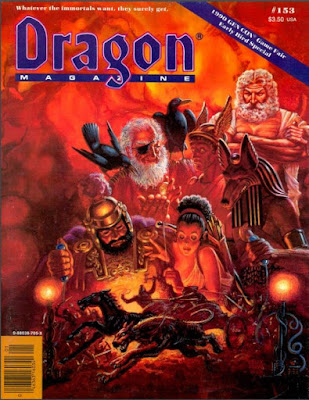Uh wait... isn't that supposed to be Swords & Wizardry Appreciation Day? Well, yes, but this year Gamers & Grognards, our host, has decided to expand the day to any old-school game that emulates the Original Edition, or (of course) the Original Edition itself.
This year I want to talk about one of my favorite Old-School games, Spellcraft & Swordplay.
Now, just I get this out of the way first. Jason is a friend of mine and we worked on a lot of Unisystem games together. Also, I worked on a supplement for S&S called Eldritch Witchery. That all being said I developed my opinion of this game long before EW ever was thought of.
When D&D was starting out it grew out of the rules in Chainmail. Using a d20 (twenty-sided die) was the "alternate" combat method that became the norm. But the original combat method involved 2d6 (two six-sided dice), S&S (among other changes) explores that further.
There are other changes such as saving throws are made against the appropriate ability (which is not too far off to how 5th edition or Castles & Crusades does it). So you can make a Dexterity save to avoid getting hit with something, or a Constitution save to avoid the effects of a poison.
There are no skills, but ability rolls and some characters get bonuses due their classes.
S&S “feels” a lot like the old rules.
The first third of the book is dedicated to character creation. It is roughly analogous to “Men & Magic” and about the same size. We have our introduction that tells why this book is here. There is a section on ability scores and what they can do. There are entries for the four core races (humans, elves, dwarfs, and Halflings), Warriors (not Fighters or Fighting Men), Priests, Wizards, Thieves and Assassins, all the things we remember as kids or have been told about. Some things have been renamed (my OD&D had Clerics and Magic Users and it was not till 2nd Ed that I had Priests and Wizards) some oddly so (Crypto-Linguistics? I am going to need some more levels in Read Languages to figure that out!) but the spirit is there and that was the point.
Classes each have their own advancement tables as in days of old, though the hit point calculations are weird, they are in line with OD&D rules (I just had forgotten how it was done). Though I missed the level names. Spells are a simpler deal. Levels and description, that’s it.
Part 2, Combat and Confrontation is a little more modern than it’s old school counterpart, showing it’s modern sensibilities. It is, in fact, truer to a more modern concept, the Dungeon Master’s Guide. Ability checks, for the most part, replace all skills. Armor Classes though go up instead of down (so 7 is better than 3) and start at 1, not 10.
Part 3, Monsters and Magic is the “Monsters & Treasure” or “Monster Manual” portion. All stats are in a table at the beginning of the chapter, with descriptive text and some pictures following. It does make it awkward to read, but again this is the same as the OD&D books. Monsters are followed by a listing of magic items.
While there some differences from baseline D&D, S&S is one of those systems that becomes systemless after a while. The focus is less on rolling dice and more on adventure and role-playing. For that reason, I find anything written for OD&D, Swords & Wizardry or Basic D&D can be translated and used in a snap.
In fact, as much as I enjoy Swords & Wizardry I find Spellcraft & Swordplay closer to OD&D in terms of gameplay and feel.
- Spellcraft & Swordplay Core Rulebook
- Spellcraft & Swordplay: Monstrous Mayhem
- Spellcraft & Swordplay: Eldritch Witchery
- Spellcraft & Swordplay Basic Game (It's FREE!)
- Spellcraft & Swordplay Character Sheet
Spellcraft & Swordplay Characters
- Asa Vajda (From Black Sunday)
- Dracula
- Elizabeth Bathory (monster stats)
- Emirikol the Chaotic
- Hex (from Skylanders)
- Red Sonja
- Sir Gannon and Del
- Skylla
- The Necromancer
- Xena & Gabrielle
- Grognardia
- RPG.net
- A Paladin In Citadel
- Tenkar's Tavern
- Dreams and Dragons (with a review of Eldritch Witchery too!)














